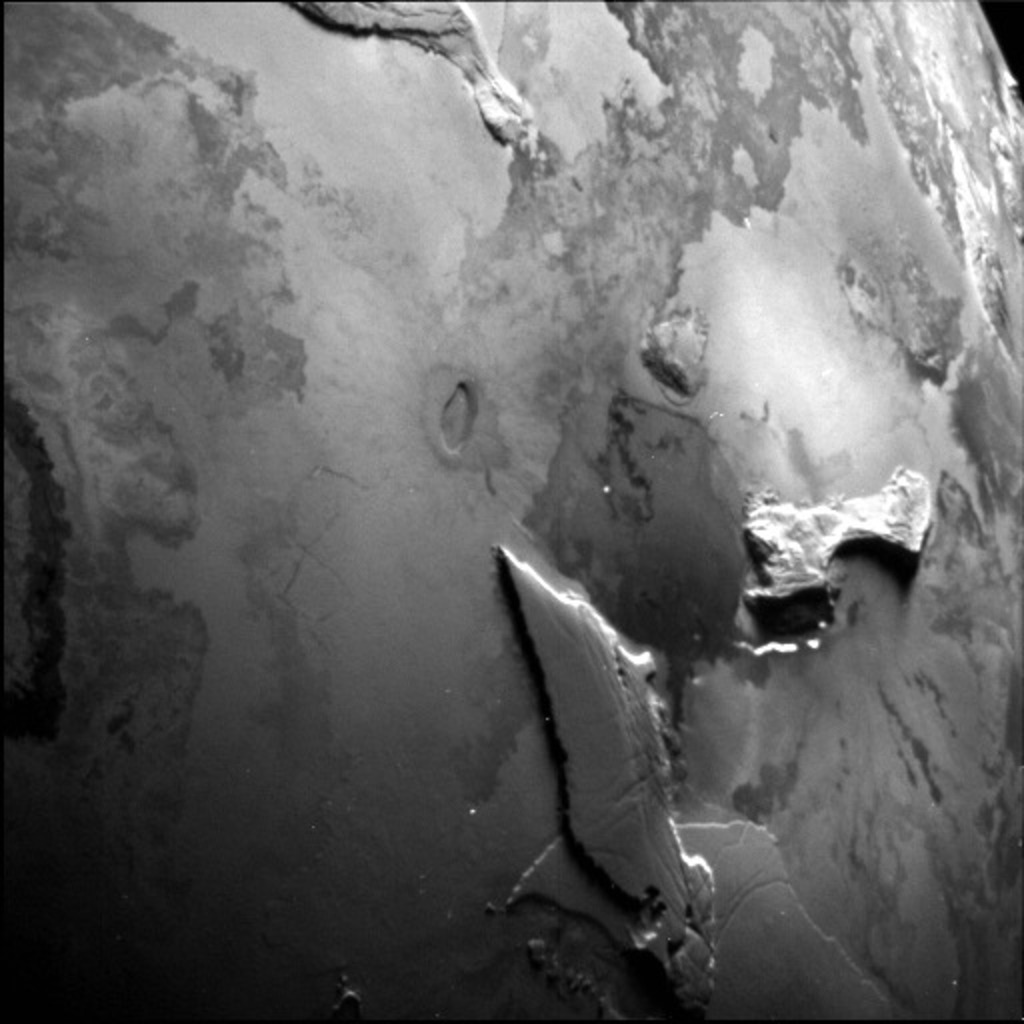
Planetary Picture of the Day
Week of December 9, 2024
From close to distant, we work our way through the solar system this week, with volcanoes on Earth and Io, a strange rock on Mars, Saturn's moon Tethys, and dwarf planet Pluto.
Monday, 9 December 2024

Round Rock
No, someone didn't leave a frozen turkey out. This image was captured by NASA's Curiosity rover in 2023 and shows a round rock with a nice weathering rind. These rinds are caused by exposure to air or groundwater, leading to some interesting ideas about the past Martian surface.
Tuesday, 3 December 2024

Zal Patera
NASA's Juno spacecraft took this image of Io in September 2023. The volcano in the middle is Zal Patera. The lava flow on the left side is the western portion of Tonatiuh. Shockingly, this image was not captured with JunoCam, as most others were. Juno's Stellar Reference Unit star camera, a high-sensitivity star tracker, took it.
Wednesday, 11 December 2024

Orange Lava, Blue Lagoon
Landsat 9 captured this image of lava coming from an eruptive fissure near Stóra Skógfell peak on Iceland's Reykjanes peninsula. Lava from the eruption flowed across major roads and closed in on the Blue Lagoon, a popular tourist destination. This natural color scene is overlaid with an infrared signal to help distinguish the lava’s heat signature.
Thursday, 12 December 2024

Tethys by Sunlight and Saturnshine
There is really something special about this image of Tethys, a small moon of Saturn. The crescent view is very poetic. The tiny world (mean diameter 533 km) is lit by sunlight on the right and Saturnshine on the night side. Captured by NASA's Cassini spacecraft on August 3, 2005.
Friday, 13 December 2024

The Rich Color Variations of Pluto
NASA’s New Horizons spacecraft captured this high-resolution enhanced color view of Pluto on July 14, 2015. The image combines blue, red, and infrared images taken by the Ralph/Multispectral Visual Imaging Camera (MVIC). Pluto’s surface sports a remarkable range of subtle colors, enhanced in this view to a rainbow of pale blues, yellows, oranges, and deep reds. Many landforms have distinct colors, telling a complex geological and climatological story scientists are working to decode.





